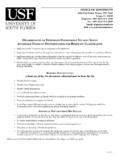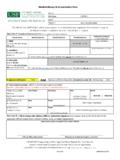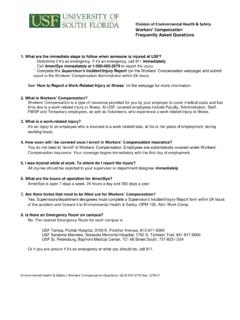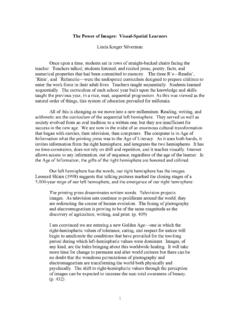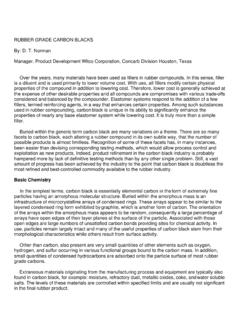Transcription of Licensing Exam Practice Questions July 2013 - usf.edu
1 Licensing Exam Practice Questions July 2013 A female client comes to see a social worker to discuss her relationship issues. According to the psychosocial perspective, the social worker should: (A) have her tell you about the issues affecting her life (B) begin training behavioral techniques (C) provide a referral to a psychologist for testing (D) refer to a marriage and family therapist The correct answer is A Always take time to listen and explore your clients needs and feelings. Exploration and learing are vital parts of the beginning of therapy. Clients often need to feel heard and understood. Often, you may be the only person in their life who will listen and hear their feelings, thoughts, ideas, etc. B IS INCORRECT Training behavioral techniques is a very specific process for use with very limited modalities of treatment. It is generally considered a specialty and should not be used by anyone without the proper training. C IS INCORRECT There is nothing specific here that you cannot handle.
2 Psychologists are necessary for testing and certain functions. D IS INCORRECT This is not a specialization issue. You can always refer later. As a new clinical social worker you find yourself being told by your supervisor you need to be more confrontational. This seems at odds with the social work mission, until you supervisor explains the primary purpose of confrontation is to: A) demonstrate accurate understanding B) help a client change her view of a problem C) make a client aware of inconsistencies D) help the client identify alternatives to her present behavior The correct answer is C Client's often have inconsistent views and values concerning a specific problem. This is a HUMAN problem we all fight with. Conflicts between what a client 'thinks' should be the solution and what the actual solution will be is the bread and butter of therapy. Just because we know we should do something does not mean we will act in the appropriate manner.
3 (Think about cigarette smoking as an example) A is INCORRECT. You demonstrate an accurate understanding by reflective listening (telling the client what you think you heard them say) and by asking Questions for clarification. This response back to the client is the primary component of active listening. Rather than passively B is INCORRECT. This is the ultimate goal of many therapies and an end result you should always look to achieve. However, there are many ways to achieve it without confrontation. D is INCORRECT This is definitely a part of therapy. Helping client's see alternatives and supporting them in their attempts to change their behavior is very powerful therapeutic intervention. But there are more ways to achieve this than through confrontation. *not affiliated with Association of Social Work Boards (ASWB ). You have been hired, by a private, non-profit agency, which works with the HIV/AIDS population. The primary function of your unit is to educate sexually active individuals about the disease and to help them understand the importance of testing, life-style changes and treatment if necessary.
4 What is the BEST way to describe your agency s type of prevention? A) crisis intervention B) tertiary prevention C) secondary prevention D) primary prevention The correct answer is CSecondary prevention, also called "screening," refers to measures that detect disease before it is symptomatic. The goal of secondary prevention is to identify and detect disease in its earliest stages, before noticeable symptoms develop, when it is most likely to be treated successfully. With early detection and diagnosis, it may be possible to cure a disease, slow its progression, prevent or minimize complications, and limit disability. Reference: A is INCORRECT Crisis intervention is a particular type of intervention geared towards a specific circumstance, which can overwhelm the client. Crisis intervention, may be provided at the Primary, Secondary or even Tertiary levels of intervention. Crisis intervention is not limited in scope. B is INCORRECT Tertiary prevention efforts focus on people already affected by disease and attempt to reduce resultant disability and restore functionality.
5 Tertiary prevention programs aim to improve the quality of life for people with various diseases by limiting complications and disabilities, reducing the severity and progression of disease, and providing rehabilitation (therapy to restore functionality and self-sufficiency). Unlike primary and secondary prevention, tertiary prevention involves actual treatment for the disease and is conducted primarily by health care practitioners, rather than public health agencies. Reference: 723 D is INCORRECT Primary prevention is the inhibition of the development of disease before it occurs. Primary prevention measures fall into two categories. The first category includes actions to protect against disease and disability, such as getting immunizations, ensuring the supply of safe drinking water, applying dental sealants to prevent tooth decay, and guarding against accidents. General action to promote health is the other category of primary prevention measures.
6 Health promotion includes the basic activities of a healthy lifestyle: good nutrition and hygiene, adequate exercise and rest, and avoidance of environmental and health risks. Reference: You have been hired as a social work case manager for an urban based agency. Your mission is to assess the needs of the client, the client's family, and to arrange for, coordinate, monitor, evaluate and advocate for a package of multiple services to meet the specific client s complex needs. Social work case management is distinct from other forms of case management because it addresses all of the following EXCEPT: A) the client's Biopsychosocial status and the state of the social system in which the client operates. B) the need for the client to accept the services provided because they are identified as necessary by the social work case manager. C) intervention occurs at both client (micro) and system (macro) levels. D) the need for the social worker to develop and maintain a therapeutic relationship with the client.
7 The correct answer is B Social Work always allows the client the right of self-determination. Just because you (the professional social worker) believes the client needs a certain services does not obligate the client to accept or utilize that service. The client is always in control. A IS INCORRECT (This is a direct social work case management function!) The client s Biopsychosocial status and the state of the social system operating around the client are directly part of the definition of social work case management as promulgated by NASW. Reference: The primary goal of case management is to optimize client functioning by providing quality services in the most efficient and effective manner to individuals with multiple complex needs. Like all methods of social work Practice , case management rests on a foundation of professional training, values, knowledge, theory, and skills used in the service of attaining goals that are established in conjunction with the client and the client s family, when appropriate.
8 C IS INCORRECT (This is a direct social work case management function!) All social work services are provided at the micro and macro level. This is what makes social work different (and a more powerful intervention than other clinical services). <in my humble opinion> D IS INCORRECT (This is a direct social work case management function!) Without the development and maintenance of a therapeutic relationship, the ability of the social worker to determine and respond to the multiple levels of need of the client in their environment becomes impaired. Client s will often have needs which they may consider trivial or embarrassing and will not allow these needs to be known to the social work case manager until a bond of trust and empathy is created. *not affiliated with Association of Social Work Boards (ASWB ). You are sitting in a case staffing meeting at your agency while several other social workers are discussing their new cases and receiving feedback and suggestions.
9 Of the four following situations, which one WOULD NOT lend itself to family A) A 17 year-old son who needs to separate psychologically from his family B) A couple with two children that has decided to divorce. C) A separated couple with two children, one child in the family has an eating disorder D) An enmeshed family, where improvement in one member is likely to cause distress in the other members The correct answer is A This is a situation where one member of a structural unit needs to leave (or be pushed out) of the structural unit. Individual therapy and crisis intervention during the separation are the best possible therapy choices. Family therapy may be appropriate after the separation and after a set period of time has passed, in order to explore the new role. B is INCORRECT Divorce is usually a nasty business and the children often get the nastiest end of the stick. If there ever was a time for family therapy, it would be now.
10 The family should explore its new roles and the expectations, both stated and implied, which are going to change in the new structure. C is INCORRECT. An eating disorder is almost always a family therapy issue. Structural Family Therapy (Salvador Minuchin) would argue that only by restructuring all the roles in the family, can you help the individual with an eating disorder. D is INCORRECT. All families are a structural unit with various roles ascribed to each member. When one family member s role begins to change because of growing awareness in therapy, the entire system will begin to destabilize and cause other family members stress until it again reaches a state of equilibrium. Another way to look at it is that family therapy will cause everyone some distress. That is kind of its purpose as it helps the family re-shape themselves. Licensing Exam Practice Questions April 2013 Terri showed up for his appointment very upset and anxious.
